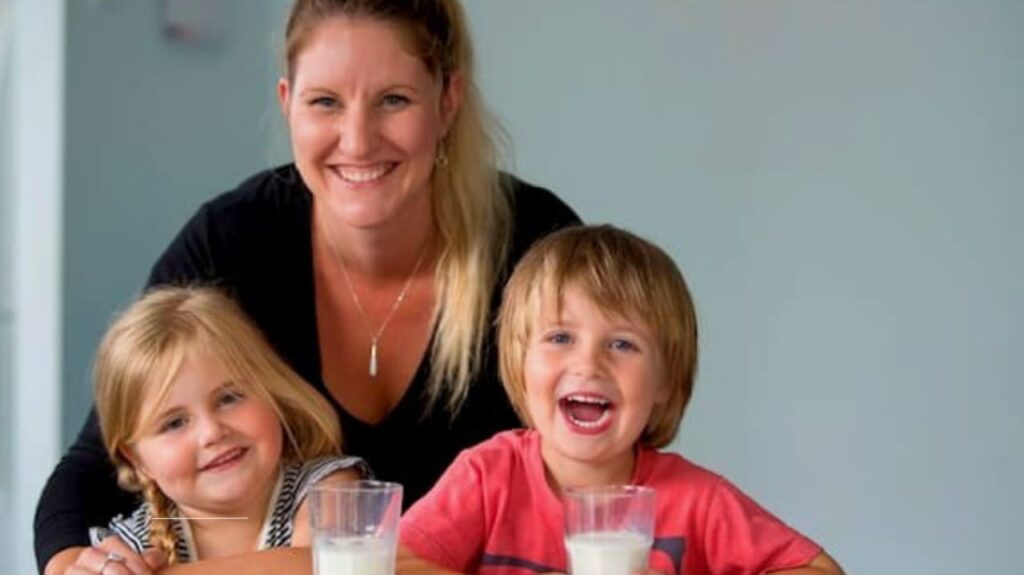
When it comes to keeping kids healthy, what they drink is just as important as what they eat. Water and plain milk consistently top the list of recommended beverages for children, according to leading health organizations like the American Academy of Pediatrics (AAP) and the World Health Organization (WHO). But why are these two drinks so universally endorsed? Let’s break down the science, benefits, and practical tips every parent should know.
The Critical Role of Hydration in Childhood
Water isn’t just a basic necessity—it’s the foundation of a child’s physical and cognitive development. Kids are more vulnerable to dehydration than adults due to their smaller body size and higher activity levels. Even mild dehydration can lead to fatigue, headaches, and trouble concentrating in school.
- How much water do kids need?
The AAP suggests:- 4–8 cups daily for children aged 1–8 years.
- 7–10 cups for kids aged 9 and older.
These amounts vary with activity, climate, and diet.
Water supports nearly every bodily function, from flushing out toxins to cushioning joints. Unlike sugary drinks, it contains no additives, making it the safest choice for hydration.
Plain Milk: A Nutrient Powerhouse
Milk has been a staple in children’s diets for generations—and for good reason. Plain milk (whether whole, reduced-fat, or skim, depending on age) is rich in calcium, vitamin D, protein, and potassium—nutrients critical for building strong bones, muscles, and teeth.
- Why avoid flavored milk?
Flavored versions often contain added sugars, which contribute to cavities and weight gain. For example, a 12-ounce chocolate milk carton can pack up to 24 grams of sugar—nearly half the daily limit for kids. - Nutritional guidelines by age:
- 1–2 years: Whole milk for brain development.
- 2+ years: Transition to low-fat or skim milk unless underweight.
Studies show children who drink plain milk instead of sugary alternatives have better overall diet quality and lower obesity rates.
The Problem With Sugary Drinks
Soda, fruit punches, and sports drinks are aggressively marketed to kids, yet they’re linked to serious health risks. The CDC reports that sugary beverages account for 10% of daily calories for the average child—a major factor in the obesity epidemic.
- Hidden dangers:
- Tooth decay: Sugar feeds harmful oral bacteria.
- Weight gain: Liquid calories don’t trigger fullness like solid foods.
- Type 2 diabetes: Excess sugar spikes insulin resistance.
Even “healthy” options like 100% fruit juice lack fiber and can lead to overconsumption. The AAP advises limiting juice to 4–6 ounces daily for kids under 6.
Plant-Based Milk Alternatives: What Parents Should Know
Almond, soy, and oat milks are popular, but not all are equal. Many lack the natural nutrients found in cow’s milk.
- Key considerations:
- Choose unsweetened versions.
- Ensure they’re fortified with calcium and vitamin D.
- Soy milk is the closest nutritionally to cow’s milk.
Always consult a pediatrician before switching to plant-based options, especially for toddlers.
Practical Tips for Encouraging Healthy Drinking Habits
Getting kids to choose water or milk over sugary drinks requires strategy:
- Lead by example: Kids mimic parents. Drink water and milk yourself.
- Make it fun: Use colorful reusable bottles or add fruit slices to water.
- Limit access: Keep sugary drinks out of the house.
- Educate: Explain how water helps them run faster or milk makes bones stronger.
For picky eaters, try blending milk into smoothies with fresh fruit or offering homemade popsicles made from plain yogurt and berries.
Addressing Common Concerns
- What if my child hates plain milk?
Gradually mix flavored milk with plain milk to reduce sweetness. Offer cheese or yogurt as calcium-rich alternatives. - Is bottled water safer than tap water?
In most U.S. cities, tap water is rigorously tested. Use a filter if concerned about contaminants. - Can my child drink too much milk?
Excessive milk (over 3 cups daily) can lead to iron deficiency. Balance with iron-rich foods like lean meats or spinach.
The Bigger Picture: Long-Term Health Benefits
Healthy drinking habits established in childhood often persist into adulthood. Kids who prioritize water and milk are less likely to develop chronic diseases like obesity, heart disease, or diabetes later in life. Schools and communities play a role too—advocating for water stations and limiting vending machine soda sales can make a measurable difference.
Expert Opinions and Case Studies
- Dr. Natalie Muth, pediatrician and AAP spokesperson:
“Water and milk should make up 90% of a child’s beverage intake. Every sugary drink replaced with water reduces their risk of obesity by 20%.” - Case Study: A 2023 University of Michigan program reduced sugary drink consumption in 200 families by 40% through education and providing free reusable water bottles.
Final Thoughts for Parents
Navigating beverage choices can feel overwhelming, but sticking to water and plain milk simplifies decisions. Small changes—like swapping juice boxes with water during lunch—add up to lifelong benefits. Stay informed, involve kids in choices, and lean on healthcare providers for personalized advice.
